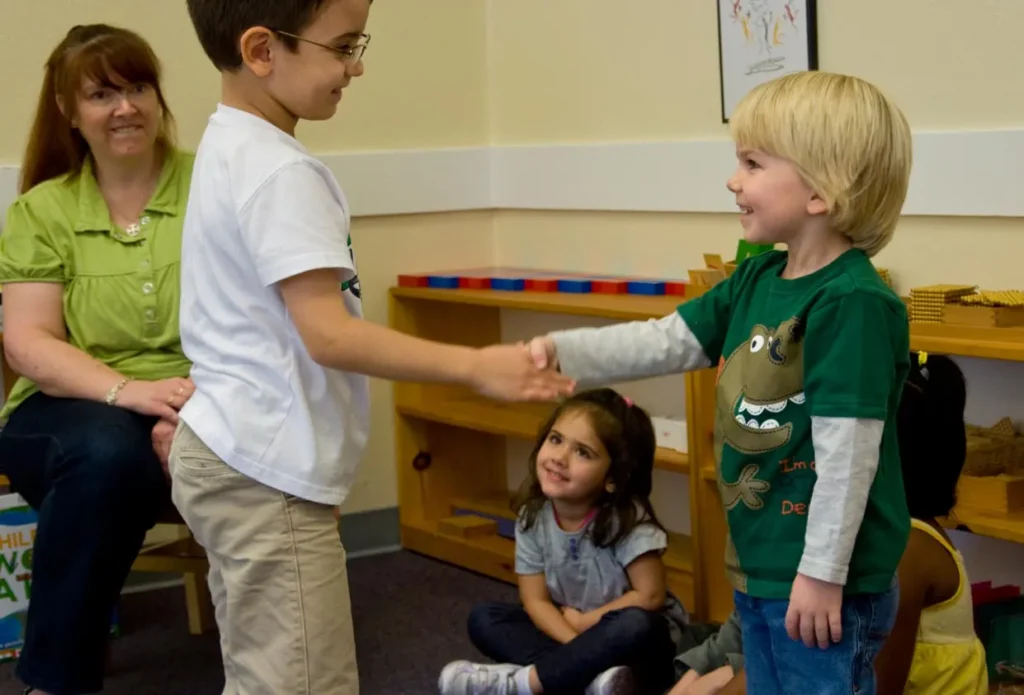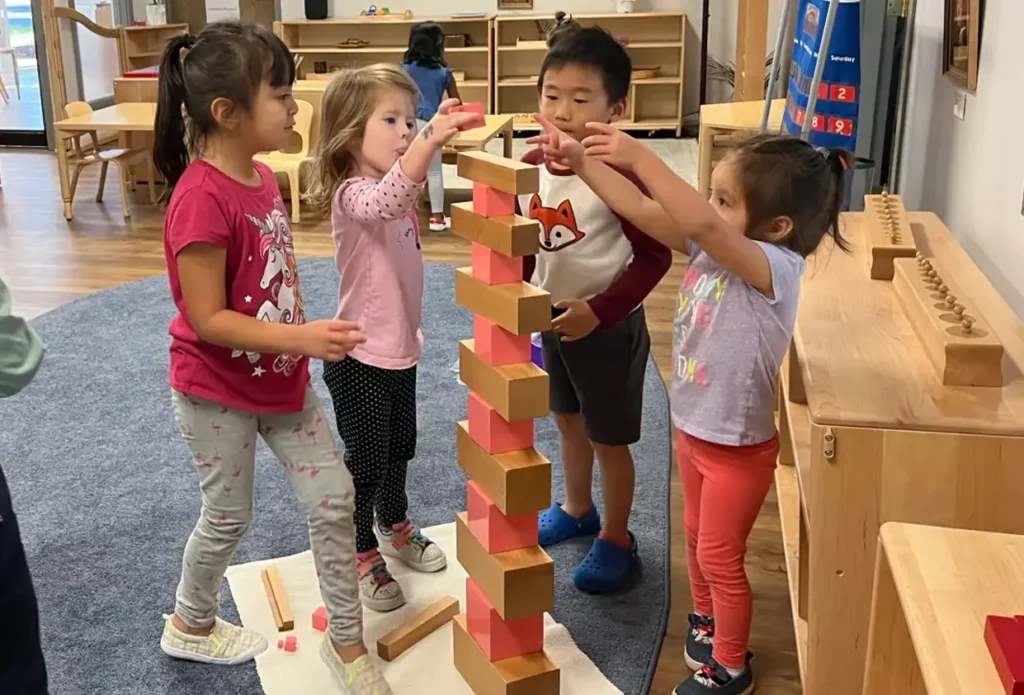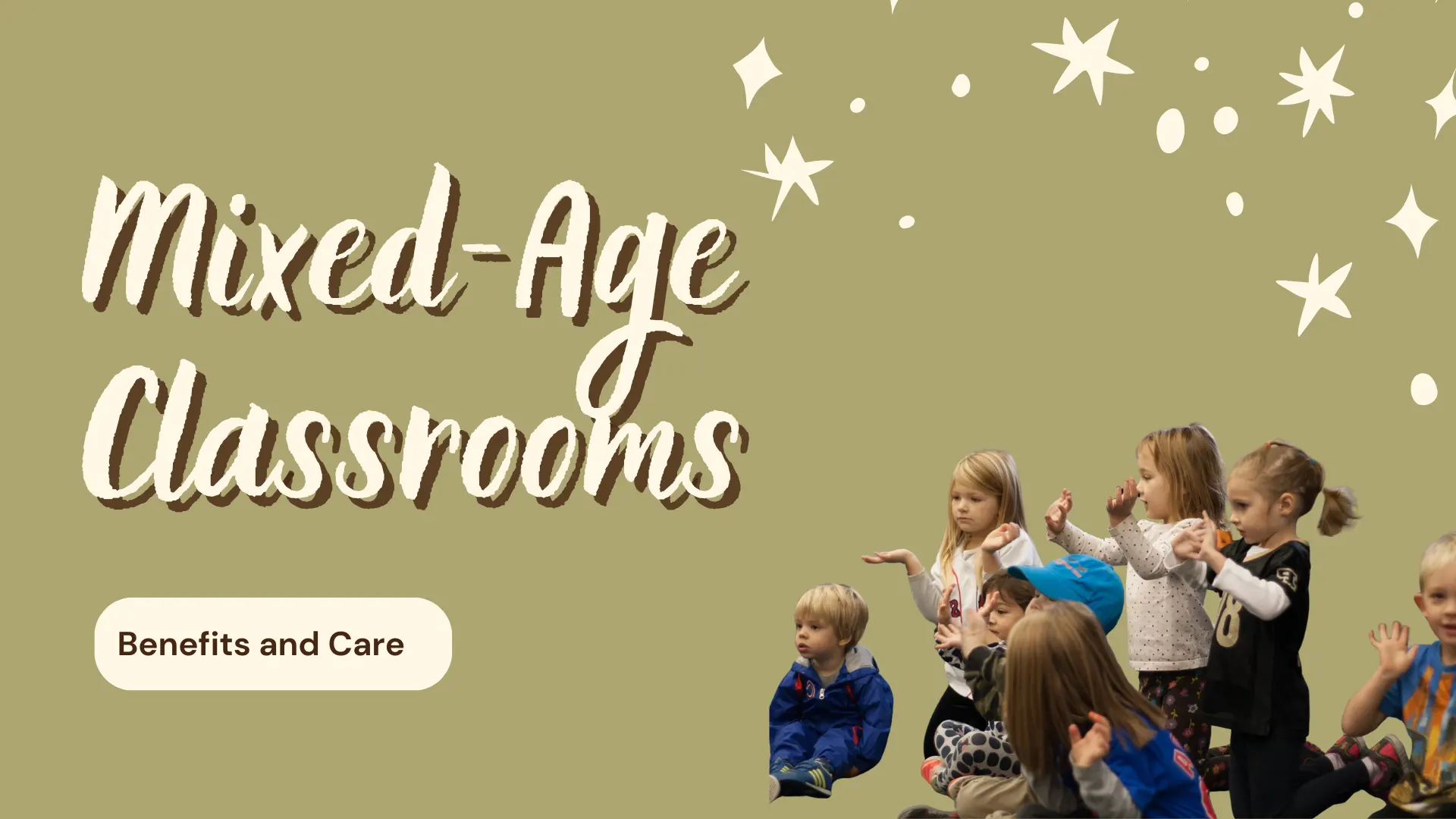Have you ever wondered why some preschools mix younger and older children together instead of keeping them in separate age groups? Could learning side by side with kids of different ages actually boost development? And what unique advantages might a child gain from being in a mixed-age classroom compared to a traditional one?
The answer lies in the way children naturally learn from one another. In mixed-age classrooms, older students often step into mentoring roles, reinforcing their knowledge and building leadership skills, while younger children gain confidence, language growth, and problem-solving strategies by modeling older peers. This creates a lively, collaborative environment where empathy, cooperation, and resilience grow alongside academic abilities. Parents, teachers, and researchers alike are recognizing how this structure supports both social-emotional learning and cognitive development, offering benefits that go far beyond the classroom walls.
In the sections that follow, we’ll take a closer look at the many benefits of mixed-age classrooms in preschool, while also addressing the care, strategies, and practical insights that make this approach so effective for young learners.

What are mixed-age classrooms?
Mixed-age classrooms in preschool bring children of different ages together in one learning community. Instead of separating by birth year, a mixed group, such as ages three to five, shares daily routines, learning centers, and projects. The goal is not to rush younger children or slow down older ones but to create an environment where each child learns at a pace that suits their development.
In practice, the room is designed with materiais abertos e flexible activities areas so children can participate at different levels. Teachers group children in various ways. Sometimes peers of the same age work side by side, and at other times younger and older children collaborate. This structure allows younger children to observe and model from older classmates, while older ones build leadership and empathy by guiding their peers.
What type of schools use multi-age classes?
Multi-age classrooms appear in different types of schools around the world. While each setting applies the idea differently, they share the belief that children benefit from learning in mixed-age groups.
Montessori schools
Educação Montessori is best known for its three-year age groupings, such as ages three to six. Older children act as role models and guides, while younger ones learn through observation and imitation. Teachers are specially trained to manage these interactions, making mixed-age grouping a core feature of Montessori practice.
Waldorf schools
Waldorf education often keeps students with the same teacher for several years. This model supports relationship-building and allows teachers to guide children through different developmental stages. Multi-age groups in Waldorf settings also reflect the school’s emphasis on continuity, rhythm, and holistic learning.
Reggio Emilia-inspired programs
Reggio Emilia programs encourage flexible collaboration and project-based learning. Multi-age grouping fits naturally here, as children are invited to work together according to their interests rather than their age. This helps create communities where cooperation and creativity flourish.
Nature-based and forest schools
Outdoor schools often bring together children of different ages. Mixed-age groups reflect how children interact naturally in play, whether exploring a forest, climbing trees, or investigating bugs. These schools see age diversity as an extension of learning from the environment itself.
Faith-based and religious schools
Some faith-based preschools and religious schools also adopt multi-age classrooms. Smaller enrollments often make flexible grouping a practical choice, and the model aligns with their emphasis on community and shared responsibility. Mixed-age learning in these settings reinforces values such as cooperation, respect, and care for others.
Private and independent schools
Many private schools, inspired by alternative philosophies, adopt multi-age classrooms to personalize learning. Smaller class sizes allow them to group students flexibly, encouraging peer mentoring and stronger teacher-student connections.
International schools
Some international schools also use mixed-age classes, especially those serving students from different cultural and academic backgrounds. This structure provides flexibility and helps accommodate varied learning needs.
Cooperative preschools
In cooperative preschools, where families actively participate in classroom life, mixed-age groups help create a sense of community. Children learn together while parents and teachers share responsibility for guiding development.
In addition to these school types, multi-age or composite classes are also found in public education systems in certain countries. For example, in Australia and New Zealand, composite primary classes are relatively common, often used to balance numbers and meet diverse needs. Globally, about one-third of classrooms are multigrade, showing that while the approach is not universal, it is far from rare.
What are the pros and cons of multi-age classes?
Multi-age classrooms bring a distinctive set of strengths, but they also come with challenges that schools and families need to consider. Understanding both sides helps clarify whether this model is the right fit for a given community.
Pros of multi-age classes
- Peer learning and mentorship
Older students often take on leadership roles, reinforcing their own knowledge by guiding younger peers. Younger children gain confidence and skills by observing and imitating their older classmates. - Social and emotional growth
Mixed groups encourage cooperation, patience, and empathy. Children learn to interact with peers at different developmental stages, much like they do in families or real-life communities. - Continuity of care
Many programs keep children with the same teachers for more than one year. This stability supports stronger bonds, smoother transitions, and a deeper understanding of each child’s strengths and needs. - Flexible learning pace
Instead of being locked into a single grade-level curriculum, children are encouraged to progress at their own speed. Teachers can design activities with multiple entry points, ensuring that every child participates meaningfully. - Community building
Mixed-age settings create a sense of belonging. The classroom feels less competitive and more collaborative, helping children see themselves as contributors to a group.
Cons of multi-age classes
- Curriculum complexity
Designing lessons that engage a wide range of ages and abilities can be challenging. Teachers must carefully plan activities with different layers of difficulty. - Teacher preparation
Not all educators are trained for multi-age environments. Without proper training, teachers may struggle with balancing the needs of both younger and older children. - Classroom management
A broader age span means more diverse behaviors and learning styles. This requires strong organization and flexibility from educators. - Parental concerns
Some parents worry that their child might be “held back” by younger peers or “left behind” by older ones. These misconceptions can create resistance, even when research supports the benefits. - Resource demands
Multi-age classrooms may require additional materials, flexible space arrangements, and ongoing professional development for teachers.
In short, multi-age classrooms can be incredibly enriching, blending academics with life skills. Yet they demand thoughtful design, trained educators, and family support to reach their full potential.
Need Classroom Design Services?
We not only supply durable preschool and daycare furniture, but also provide professional classroom design services. Our team helps you plan safe, functional, and inspiring learning spaces, combining furniture solutions with complete layout support. Whether you’re setting up a new school or upgrading existing classrooms, we deliver a one-stop service tailored to your needs.
Get Free ConsultationBest Practices for Managing Mixed-Age Classrooms
For multi-age classrooms to succeed, teachers and schools rely on intentional strategies that support both academic growth and social development. These approaches help balance the needs of younger and older learners while maintaining a cohesive classroom community.
Differentiated instruction
One of the most important strategies is designing lessons with multiple entry points. Activities should allow children to engage at their own level of readiness. For instance, during a literacy activity, younger children might work on letter recognition while older children practice writing full sentences, all within the same group.
Flexible grouping
Teachers alternate between same-age groups and mixed-age groups. Same-age clusters allow for targeted skill practice, while mixed groups encourage mentorship and peer-to-peer learning. This balance ensures that all children feel both supported and challenged.
Peer mentoring and leadership
Older students can take on natural roles as helpers or reading buddies. This not only reinforces their own understanding but also gives younger children role models to look up to. Teachers guide these interactions to keep them positive and inclusive.

Aprendizagem baseada em projetos
Hands-on projects provide opportunities for collaboration across ages. In a science project about plants, younger children might water seeds while older peers record growth in journals. Shared tasks allow each child to contribute meaningfully.
Continuity of care
Keeping children with the same teacher for multiple years helps build trust and consistency. Teachers gain a deeper understanding of each child’s developmental path, making it easier to set realistic goals and provide steady support.

Use of technology
Digital tools can be adapted for different levels, providing personalized practice without separating children. For example, interactive math apps may adjust to each child’s progress, ensuring engagement for all ages in the classroom.
Clear routines and expectations
Strong classroom management is essential. Predictable schedules, clear expectations, and structured transitions help children of varying ages work together smoothly. When routines are stable, children can focus more on learning and relationships.
These strategies make mixed-age classrooms not only manageable but also highly enriching. When implemented thoughtfully, they transform age diversity into a powerful resource for learning.
Making Sense of Mixed-Age Classrooms in Early Learning
Mixed-age classrooms in preschool offer a unique and meaningful approach to early childhood education. By bringing together children of different ages, these classrooms create learning communities where peer mentoring, cooperation, and flexibility thrive. Younger children benefit from guidance and inspiration, while older peers strengthen leadership and empathy—skills that extend well beyond academics.
Of course, this model is not without its challenges. It requires thoughtful planning, well-prepared educators, and ongoing communication with families. Curriculum design, classroom management, and teacher training all play crucial roles in ensuring that the benefits outweigh the difficulties. When done successfully, however, multi-age education provides a nurturing and supportive environment that mirrors real-life social dynamics more closely than traditional age-segregated classrooms.




